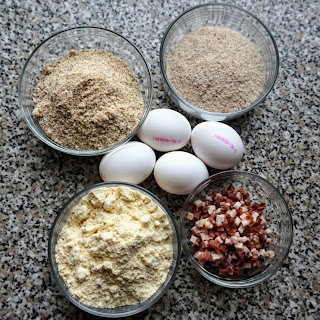Ever wonder why your fitness tracker seems obsessed with that magical number: 10,000 steps? It's not just a gimmick to keep you pacing like a caged lion.
Walking 10,000 steps daily is your ticket to better health, a longer life, and maybe even fitting into those jeans from your pre-pandemic glory days.
And trust me, when I say this, it's more than just fitness folklore—it's science-backed brilliance!
Why 10,000 Steps? The Tale Behind the Target 🎯
In our fast-paced, technology-driven world, finding simple and effective ways to stay healthy can often seem daunting. However, one of the most beneficial and accessible forms of exercise is something we do every day: walking. Specifically, walking 10,000 steps daily has become a popular goal for many seeking to improve their health and well-being. But why 10,000 steps? Let's explore the myriad of benefits this daily practice can bring to our lives.The Science Behind 10,000 Steps
Weight Management and Calorie Burning
Walking 10,000 steps a day can also be a powerful tool for weight management. Let's crunch some numbers because, let's face it, they don't lie. A person weighing around 155 pounds burns approximately 500 calories walking 10,000 steps (or about 5 miles)2. Over time, this can lead to significant weight loss and help maintain a healthy weight, especially when combined with a balanced diet.Heart Health and Vascular System
One of the most significant benefits of walking 10,000 steps daily is the positive impact it has on heart health. Regular walking strengthens the heart, improving circulation and reducing the risk of cardiovascular diseases like deep vein thrombosis and varicose veins. Better circulation means your blood is effectively transporting oxygen and nutrients throughout your body, helping to keep every system running smoothly. Think of your veins and arteries as a well-maintained highway system, free of traffic jams and potholes.Mental Health and Longevity
Walking offers benefits that go beyond physical health, positively impacting mental well-being as well. Regular walking releases endorphins, the hormones that enhance mood, which can help alleviate stress, anxiety, and depression. The rhythmic motion of walking, coupled with exposure to nature and fresh air—often referred to as "forest bathing" or Shinrin-Yoku in Japan—can boost mood and enhance mental clarity4. Additionally, physical activity stimulates endorphin production, the body's natural mood elevators. So, the next time your boss is breathing down your neck, take a hike—literally.Bone Density
Weight-bearing exercises like walking increase bone density, which is crucial for preventing osteoporosis as you age. According to a study regular walking can significantly improve bone density and strength5. It's like adding a layer of armor to your skeleton—without the clunky metal suit.Extra Benefits
The WHO Recommendation and Making it Manageable
The World Health Organization (WHO) recommends adults aged 18-64 should do at least 150-300 minutes of moderate-intensity, or 75-150 minutes of vigorous-intensity aerobic physical activity throughout the week. Walking 10,000 steps daily fits perfectly within these guidelines, offering a manageable and sustainable way to meet these recommendations.Immune System Boost: Step into a Healthier You
Regular physical activity, such as walking, enhances immune function, helping you fend off common illnesses like colds and the flu. It increases the circulation of white blood cells and antibodies, which are essential for fighting off pathogens6.Creativity and Productivity: Walk to Win
Steve Jobs, a notorious walker, often held meetings while walking. A study by Stanford University found that walking boosts creative output by an average of 60%7. So, if you’re stuck in a mental rut, lace up those sneakers and take a walk—your next big idea might just be around the corner.Sleep Quality: Dream On
Physical activity helps regulate your circadian rhythm, improving the quality of your sleep. A study from the Sleep Foundation found that those who engage in regular moderate exercise, like walking, fall asleep faster and enjoy deeper sleep8. Better sleep means better overall health and more energy to tackle those 10,000 steps the next day.Tips for Reaching Your 10,000-Step Goal
Incorporating 10,000 steps into your daily routine can be easier than you think. Here are some practical tips to help you achieve this goal:- Take the Stairs: Opt for stairs instead of elevators whenever possible.
- Park Further Away: When driving, park further from your destination to get in extra steps.
- Walking Meetings: Instead of sitting in a conference room, suggest a walking meeting with colleagues.
- Break it Up: Break your walking into manageable chunks. A 10-minute walk, three times a day, can quickly add up.
- Use a Pedometer or Fitness Tracker: These devices can help track your steps and motivate you to reach your goal.
One Small Step for Man, One Giant Leap for Your Health
So, there you have it, folks. Walking 10,000 steps daily is more than just a fitness goal; it's a holistic approach to a healthier and more active lifestyle. It's a step towards taking responsibility for your health, enhancing your longevity, and living a vibrant, fulfilling life. By integrating this simple practice into your daily routine, you can enjoy the profound benefits of improved physical and mental health.
1 Fact sheets physical activity
2 Calories burned in 30 minutes for people of three different weights
3 Minimum amount of physical activity for reduced mortality and extended life expectancy
4 Shinrin-Yoku and Nature Therapy: A State-of-the-Art Review
5 Walking is related to bone density and rates of bone loss
6 The compelling link between physical activity and the body's defense system
7 Stanford study finds walking improves creativity
8 Physical Activity and Sleep - How it improves sleep, additional health benefits, and why timing is crucial
2 Calories burned in 30 minutes for people of three different weights
3 Minimum amount of physical activity for reduced mortality and extended life expectancy
4 Shinrin-Yoku and Nature Therapy: A State-of-the-Art Review
5 Walking is related to bone density and rates of bone loss
6 The compelling link between physical activity and the body's defense system
7 Stanford study finds walking improves creativity
8 Physical Activity and Sleep - How it improves sleep, additional health benefits, and why timing is crucial














